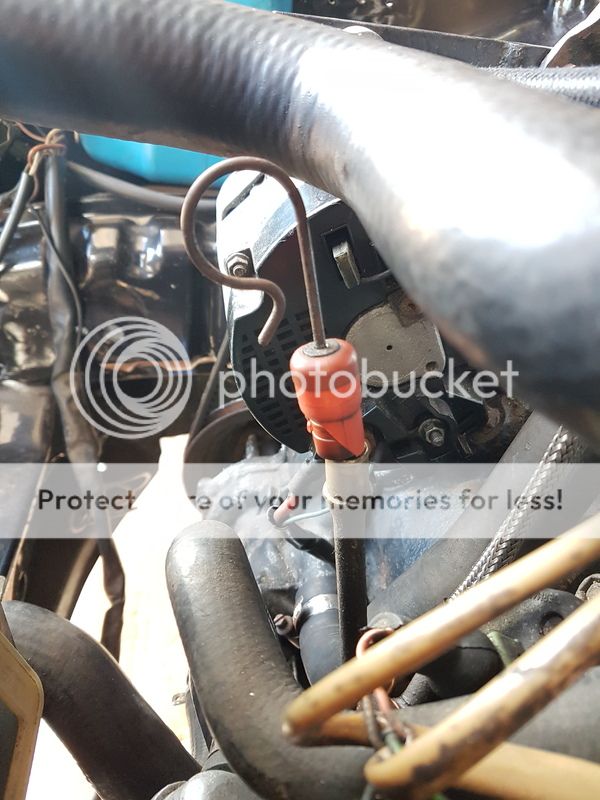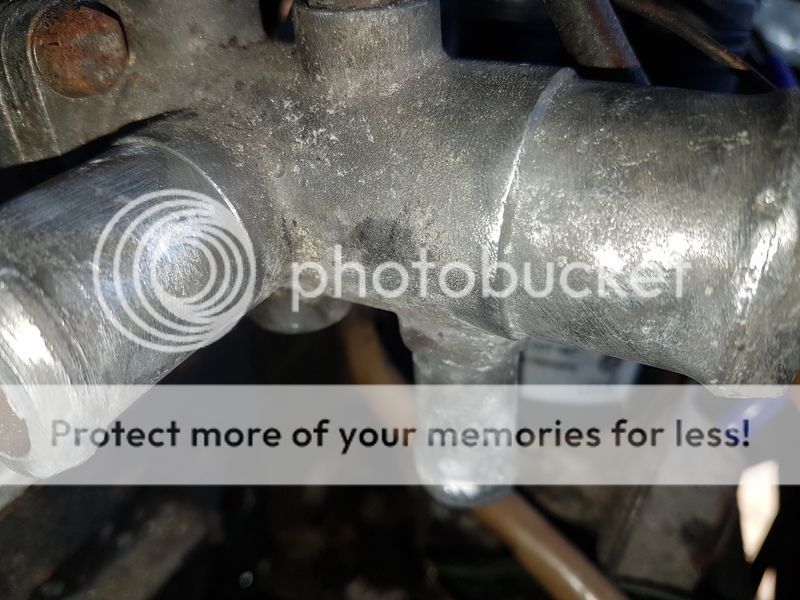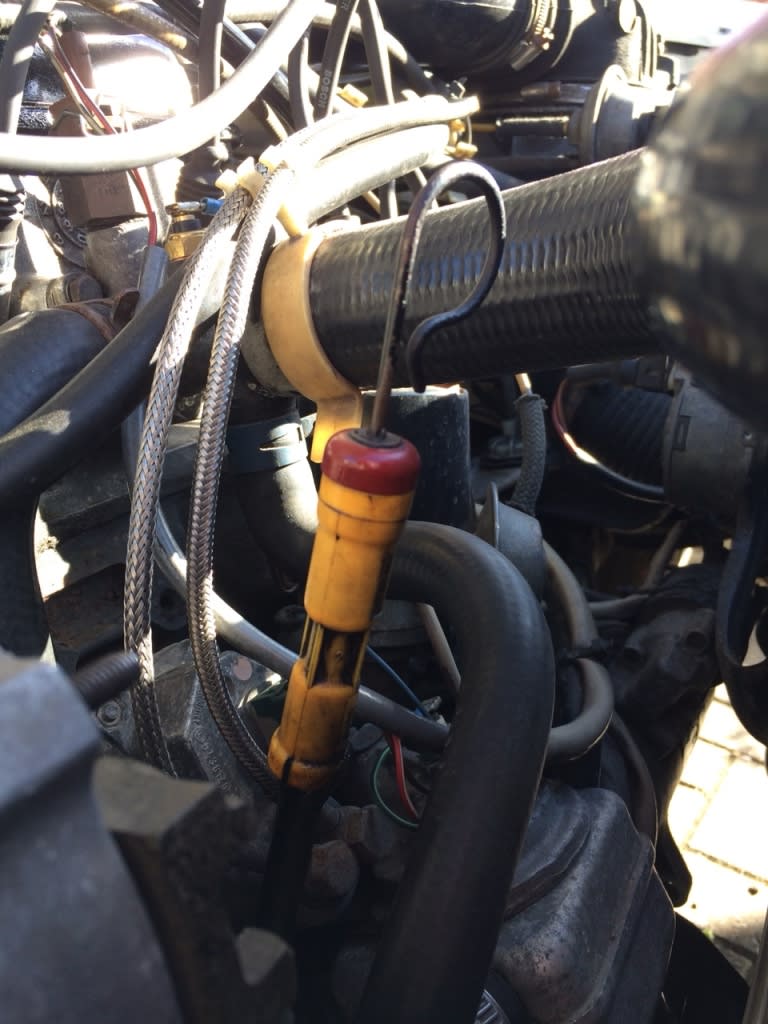Couple of Quick Q's re: dipstick and coolant sensor
Posted
#1614418
(In Topic #220536)
Settled In


First one, I have this dipstick. Will this be giving an accurate reading as it sits or do I need to buy a new one?

Second is I seem to have a coolant leak around the coolant temperature sensor. Is there a seal or anything or sealant I need to use?

Thanks
Posted
Old Timer

and a fan switch washer but not sure if available separately from the switch
https://www.vwheritage.com/191959481c-radiator-3-pin-fan-switch-inc-seal-95-84102-91c-vw-spare
Posted
Settled In


I'll get a new fan switch.
Going to replace all the coolant hoses at the same time as more leaks are becoming visible the more I look.
Posted
Settled In


Posted
Settled In




Im going to try and smooth them down with some sandpaper and hope this gets a better seal.
If not, do I replace the pipes or this part with the pitting?
Posted
Local Hero

I prefer the Springy Clips for my Radiator, and I use a fuel hose clamp on the over flow. The issue with the Screw type clamp is that on smaller diameters it seals in a oblong and not a true round. I have seen the screw clamps with the fingers under the clamp not running flush with the clamp as well which causes the hose to pucker.
What do Divorces, Great Coffee, and Car Electrics all have in common?
They all start with GOOD Grounds.
Where are my DIY Links?
They all start with GOOD Grounds.
Where are my DIY Links?
Posted
Settled In


https://www.ebay.co.uk/itm/MIKALOR-32-35MM-HEAVY-DUTY-COOLANT-WATER-HOSE-CLAMP-CLIP-MLR-KX/122642862910?epid=1843855127&hash=item1c8e15933e:g:cSMAAOSwc49Y7gaC
Posted
Local Hero

What do Divorces, Great Coffee, and Car Electrics all have in common?
They all start with GOOD Grounds.
Where are my DIY Links?
They all start with GOOD Grounds.
Where are my DIY Links?
Posted
Regional Host NE



other car manufacters use jubilee
clips as opossed to spring steel type
Do not know a lot but willing to help if possible
1989 Sapphire Blue Mk1 Cabriolet KR
1985 Atlas Grey Mk2 GTI 2.0 ABF
1989 Sapphire Blue Mk1 Cabriolet KR
1985 Atlas Grey Mk2 GTI 2.0 ABF
Posted
Regional Host NE



pressure should be 1 bar if the engine is forcing water
from hose joints it is exceeding
1 .5 bar
Do not know a lot but willing to help if possible
1989 Sapphire Blue Mk1 Cabriolet KR
1985 Atlas Grey Mk2 GTI 2.0 ABF
1989 Sapphire Blue Mk1 Cabriolet KR
1985 Atlas Grey Mk2 GTI 2.0 ABF
Posted
Local Hero

nicci21paul said
not to sure but the normal
pressure should be 1 bar if the engine is forcing water
from hose joints it is exceeding
1 .5 bar
14.5psi is normal for the cooling system, so you may want to flush and back flush the system, if the t-stat is old you may want to replace that as well.
The Screw-type originally in the late 60's was a step up to the older spring type, and everybody raved on them.
The issue is that if your car is hot, then they squeeze ok, but when the car cools they need to be re-tightened to eliminate cold seal gap, the bottom of the screw part is supposed to lay roundish to the clamp and Circularly Hold the hose but I have found that most aren't manufactured and the bottom is elliptical and not curved for the hose so the hose will not seal flat to the flange. Specially on smaller diameters. The VW re-designed the Spring clamps to be better and they work far superior to the screw type.
Yes they can be the dickens to get to as if the POS (previous owners serviceman) placed them on from the bottom or the top…But they seal when hot and seal when colder. I actually prefer them yep stupid as that seems.
The screw ones can wear a flat area in the flange and leak when you reposition them, or they can cut the hose.
You clean all the garbage off the flange, and polish it, fill in the deep pits with "JB-Weld Full Strength" then allow that to cure for 24 hours, and sand smooth…That shoudl last a good while, I also spread a thin coat of Never-seize on the inside of the hose to prevent it from "Sticking" to the flange. Always cut the hose off of plastic bits, and I have had the Screw type break plastic hose connections on older radiators and plastic flanges…
What do Divorces, Great Coffee, and Car Electrics all have in common?
They all start with GOOD Grounds.
Where are my DIY Links?
They all start with GOOD Grounds.
Where are my DIY Links?
Posted
Regional Host NE



a pressurised system to boil at
113-120 centigrade is that correct
i am not 100 percent sure advice
appreciated
Do not know a lot but willing to help if possible
1989 Sapphire Blue Mk1 Cabriolet KR
1985 Atlas Grey Mk2 GTI 2.0 ABF
1989 Sapphire Blue Mk1 Cabriolet KR
1985 Atlas Grey Mk2 GTI 2.0 ABF
Posted
Regional Host NE



water dripping from various hose
connections where are they actually
leaking from one or various spot on the
engine or different places
Do not know a lot but willing to help if possible
1989 Sapphire Blue Mk1 Cabriolet KR
1985 Atlas Grey Mk2 GTI 2.0 ABF
1989 Sapphire Blue Mk1 Cabriolet KR
1985 Atlas Grey Mk2 GTI 2.0 ABF
Posted
Local Hero

What do Divorces, Great Coffee, and Car Electrics all have in common?
They all start with GOOD Grounds.
Where are my DIY Links?
They all start with GOOD Grounds.
Where are my DIY Links?
Posted
Settled In


As for the dipstick, is it not reading correct without the guide suggested or do I need a different dipstick with the guide? It's reading full on the dipstick but sure I've not put a lot in.
Posted
Local Hero

Early cars upto 1984ish had that type of dipstick.
looks like someone has wrapped tape around it so remove the tape.
https://vwgolfmk1.org.uk/forum/index.php?page=topicview&id=classifieds%2Fparts-wanted_2%2Fmk1-golf-gti-oil
 Last edit: by mark1gls
Last edit: by mark1gls
1988 Mk1 Golf GTi Cabriolet 1.8cc DX, K-jet. Daily drive. 317,000 miles and counting
1978 Mk1 Scirocco GLS 1.6cc FR, Webber carb. Weekend toy.
1978 Mk1 Scirocco GLS 1.6cc FR, Webber carb. Weekend toy.
Posted
Settled In


Posted
Local Hero

Couple of Quick Q's re: dipstick and coolant sensor
Here’s mine on a 1984 engine.
Sent from my iPhone using Tapatalk

1988 Mk1 Golf GTi Cabriolet 1.8cc DX, K-jet. Daily drive. 317,000 miles and counting
1978 Mk1 Scirocco GLS 1.6cc FR, Webber carb. Weekend toy.
1978 Mk1 Scirocco GLS 1.6cc FR, Webber carb. Weekend toy.
Posted
Old Timer


The plastic guides always break down over time
Have you just given the engine an oil change? If you have then you should know exactly how much went back, and if you haven't do one anyway, she will thank you for it
Then when you have the new guide in place you will know for sure.
An oil level reading without a fitted guide is at least 1.5 litres to little !
Do it once and do it right! ok, we've identified the problem, lets not make it worse by guessing……… Identifying the sympton is not the same as understanding the cause 
0 guests and 0 members have just viewed this: None.








